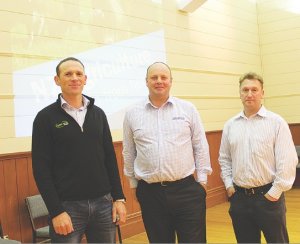DairyNZ is basing its economic modeling on average farm working expenses this season of $3.65/kgMS, which is 20c less that last season in view of tighter times. Interest and rent is estimated on average at about another $1.40.
Average income will be about $6/kgMS including milk dividend, net stock sales and a little other income.
Looking at the standard deviations on past data, on those figures about 25% of farms “have significant liquidity risk” and will struggle to meet working expenses and interest/rent payments, Newman says. That was before taxation and drawings. “Those things will have to come out of overdraft,” he said.
“Fertiliser might be one farmers can afford to pull back a bit this year and supplementary feed – given feed prices are likely to be at a high level,” Newman told a Beef + Lamb NZ event at Warkworth, north of Auckland, on ‘Agriculture – where to from here’.
Newman says operating expenses before 2006-07 were about $3.50 average level; since 07/08 costs have risen to $4.50. “So we need another dollar of milk income just to cover those costs.”
He says about 70c (per kilo basis) of that had been added with feed, fertiliser and stock grazing and another 30c on things such as compliance. “Wages haven’t been too bad – they have been fairly steady,” he says.
Debts levels had doubled in the past decade on the average farm: 20% of dairy farmers had no debt and 20% held about half the debt levels. “It is those guys who are going to feel the pinch in years like this when milk price is lower and things are tight,” he told the event.
















